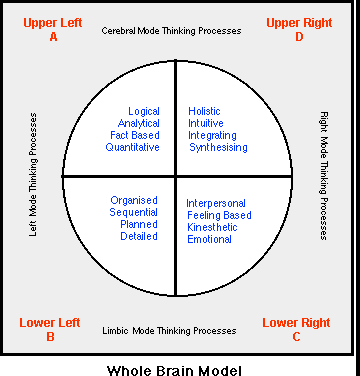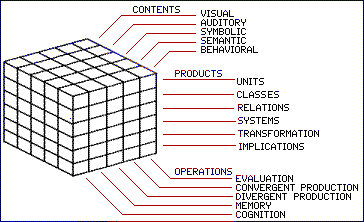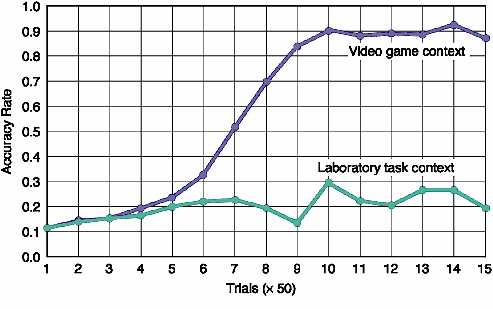
Learning with Style
January 3, 2005
PowerPoint presentation
in three formats:
Brain Dominance
The triune brain:
Reptilian brain - responsible for survival [flight or fight], monitoring motor functions [breathing, balance and instincts], territoriality, hierarchies and rote behaviour. This part of the brain is the oldest in evolutionary terms and is programmed for survival. Under stress, the reptilian brain dominates. A student under stress or anxiety will not learn anything.
Limbic brain - the middle brain controlling emotions, maintenance functions, and is the site for long term memory. This part of the brain runs our emotions, immune system, sleeping, and governs our sexuality. It routes information to where it is processed in the neo-cortex. The limbic brain validates new knowledge. Emotions are more important to the brain than cognitive understanding. The limbic area holds all three parts of the brain in balance, and links long-term memory with emotion.
Neocortex - divided into two separate halves - the left and right hemispheres. The two hemispheres are joined by the corpus-callosum. The neo-cortex is the most recently evolved. It is the part of the brain used in problem solving, discerning relationships and patterns of meaning. It is said that humans never really cognitively learn or understand something - until they can create a personal metaphor or model.
Two ways of knowing:
|
Left Brain |
Right Brain |
|
intellect |
intuition |
|
convergent |
divergent |
|
digital |
analogic |
|
secondary |
primary |
|
abstract |
concrete |
|
directed |
free |
|
propositional |
imaginative |
|
analytic |
relational |
|
lineal |
nonlineal |
|
rational |
intuitive |
|
sequential |
multiple |
|
analytic |
holistic |
|
objective |
subjective |
|
successive |
simultaneous |
Another
way of looking at it:
|
Left
Brain |
Right
Brain |
|
reasoning |
mystical |
|
logical |
musical |
|
mathematical |
creative |
|
verbal |
visual-pictorial |
|
dominates right brain |
submissive to the left brain |
|
pattern user |
pattern seeker |

Learning and thinking process is enhanced when both side
of the brain participate in a balanced manner. So, strengthen your less dominate
hemisphere of the brain.
For further Information:
http://members.optusnet.com.au/~charles57/Creative/Brain/herrmann.htm
(triune brain theory)
http://brain.web-us.com/brain/braindominance.htm
(Take a test - free)
http://www.teacher.co.nz/bookrevi.htm
(Analytic and holistic learning)
mhttp://www.bdainternationalconference.org/2001/presentations/thu_s7_d_7.htm
(application to dyslexic
students)
http://www.salesbrain.net/articles/Russell%20Martin%20Food%20for%20the%20Brain%20White%20Paper.htm
(Integrates brain theory and learning styles)
http://www.amazon.com/exec/obidos/tg/detail/-/0684847930/002-4846904-1231227?v=glance
(book review of Right-Brained Children in a Left-brained World Unlocking
the potential of your ADD Child)
Thorndike, Binet, Terman,
and other pioneers in the early 20th Century devised intelligence
tests based on verbal and mathematical aptitude.
L. L. Thurstone
was one of these pioneers who believed there was a general factor
of intelligence, but thought it wasn't important. In 1938 he postulated
seven major primary abilities:
Comparative psychologists divide learners into field-dependent and field-independent learners. This concept has been applied to human learning theory.
Sensory-motor (Infancy)
Pre Operational (2-7
years) Egocentric, nonlogical, nonreversible thought that uses and
develops symbols, language, memory, and imagination
Concrete Operational
(7-11 years). Characterized by 7 types of conservation:
number, length, liquid, mass, weight, area, volume. Intelligence is
demonstrated through logical and systematic manipulation of symbols
related to concrete objects. Operational thinking develops (mental actions
that are reversible).
Formal Operational
(Adolescence and adulthood). In this stage, intelligence
is demonstrated through the logical use of symbols related to abstract
concepts. Only 35% of high school graduates in industrialized countries
attain formal operational thought; many people do not think formally
during adulthood.
For further Information:
http://www.dmu.ac.uk/~jamesa/learning/piaget.htm
(theory based introduction to
Piaget's theories)
http://www.psy.pdx.edu/PsiCafe/KeyTheorists/Piaget.htm
(a biography based introduction to Piaget's theories)
http://otec.uoregon.edu/brain_science.
htm
(combines Piaget and brain theory)
http://www.sar.bolton.ac.uk/ltl/PMG/psych_thinking_1.htm
(compares Piaget's to other theories e.g., Tversky, DeBono
and Sternberg
Sternberg's theory is based on
Aristotle's premise that intelligence is composed
On the practical side, here are some of Sternberg's principles of training:
For further Information:
http://www.uwsp.edu/education/lwilson/learning/sternb1.htm
(an elementary description of Sternberg's Triarchic
Theory)
(a brief overview and application
of Sternberg's Triarchic Theory to training)
http://www.wilderdom.com/personality/L2-2SternbergTriarchicTheory.html
(a brief but rather
comprehensive overview ot the Triarchic Theory of Intelligence)
(history, theory, and application
to the triangle of love: intimacy, romance and decision/commitment)
Howard Gardner's (1943-20xx) Theory of Multiple Intelligences
In Frames of the Mind, (1983) Howard Gardner describes his initial list of intelligences. He believes there are more that will be discovered and measured. His initial list included:
For further Information:
http://www.salesbrain.net/articles/Russell%20Martin%20Food%20for%20the%20Brain%20White%20Paper.htm
(Integrates learning styles and multiple intelligences)
J. P. Guilford's Structure
of the Intellect
J.P. Guilford, the statistician,
developed a Structure of Intellect (SI) theory, where intelligence is viewed as comprising operations,
contents, and products. There are 5 kinds of operations (cognition,
memory, divergent production, convergent production, evaluation), 6
kinds of products (units, classes, relations, systems, transformations,
and implications), and 5 kinds of contents (visual, auditory, symbolic,
semantic, behavioral). Since each of these dimensions is independent,
there are theoretically 150 different components of intelligence.

For further Information:
http://tip.psychology.org/guilford.html
(Describes Guilford's Structure of Intelligence Theory)
http://iq-test.learninginfo.org/iq02.htm
(measuring IQ and measuring
Intelligence)

Bloom's Taxonomy of Educational
Objectives
At the turn of the century, Benjamine Bloom published his Taxonomy of Educational Objectives in the cognitive, emotional and kinesthetic domains. The cognitive domain is especially well known, and includes from the lowest to the highest domain:
| 6. Evaluation 5. Synthesis 4. Analysis 3. Application 2. Comprehension 1. Knowledge |
Categories in the Cognitive Domain: (with Outcome-Illustrating Verbs):
http://faculty.washington.edu/krumme/guides/bloom.html
(Introduction and links to many
sites dealing with Bloom's Taxonomy)
http://chiron.valdosta.edu/whuitt/col/cogsys/bloom.html
(Examples of how Bloom's taxonomy
is used in teaching)
http://www.luc.edu/schools/education/c487/sess4/bloom.htm
(How to write behavioral objectives.)
Learning Styles
In the field of Neuro Linguistic Programming, studies on how individuals prefer to get new information into their heads have been conducted with ever more interest during the last century. There are literally hundreds of different theories of learning and categorizations of Learning styles, these categories could be broken down into several main categories:
http://www.tech.purdue.edu/downloads/sot_mcnelly/learners.pdf
(A PowerPoint Presentation about Learning Styles)
http://www.ldpride.net/learningstyles.MI.htm#is%20Multiple%20Intelligence
(Multiple
Intelligence and Learning Styles)
http://www.chaminade.org/inspire/learnstl.htm
(Learning Styles Activities Chart)
http://www.support4learning.org.uk/education/lstyles.htm
(Learning Style Resources for teachers)
http://tip.psychology.org/theories.html
(Database of learning styles and
theories)
http://www2.gsu.edu/~dschjb/wwwmbti.html
(Using the Myers Briggs to determine learning style and maximize
learning)
(The VARK learning
style web page: Visual-Auditory-Read/write-Kinesthetic)
(The DVC Learning Style Survey for
college students)
Learning style is largely dependent
on personalitry style. The Myers-Briggs Type Indicator (MBTI) is one of
the most well known and broadly used personality inventories. Many
practitioners use it in diagnosing learning styles.
http://www2.gsu.edu/~dschjb/wwwmbti.html
(GSU's Master teaching program's methodology
using the MBTI to determine learning style)
A Summary of Learning Styles: This article, "Reaching the Second Tier," provides an excellent summary of the most popular and practical learning styles that are appropriate for all disciplines and particularly for the sciences.
Learning Style Resources: An excellent annotated bibliography of online information, self-scoring quizzes, and teaching tips. There are links to a wide variety of excellent learning style models.
Keirsey Temperament Sorter: This is a popular personality test, not a learning styles inventory. But it can help students reflect on the way they interact with the world and what they value. The sorter distinguishes between four types: Artisan, Guardian, Rational or Idealist. After completing the inventory, one receives a short description of their type.
Learning Styles and Strategies: This follow-up to the article "Reaching the Second Tier" offers specific strategies for students. You may want to send the URL to your students.
Assessing Learning Styles with the Myers-Briggs Type Indicator: The 126 item Myers-Briggs Type Indicator (MBTI), form G, is a highly reliable method for assessing student learning styles. The MBTI provides data on four sets of preferences. These preferences result in 16 learning styles, or types. A type is the combination of the four preferences. It is suggested that the MBTI instrument be administered in the first or second class period by the counseling center at your school. It takes about 45 minutes to complete the instrument. The counseling center should be able to score the MBTI and share the data with the students. Students enjoy learning about themselves and find the MBTI data informative. For a good Myers-Briggs self-test, see: http://www.humanmetrics.com/cgi-win/JTypes1.htm
Sensory Modality Learning Styles: This chart helps a learner identify his or her preferred sensory modality. Adapted from Colin Rose (1987).
Active Learning and Learning Modalities: Provides a test that tells the taker’s preferences: Visual, Aural, Read/write and Kinesthetic. Offers study strategies for each preference.
How Your Learning Style Affects Your Use Of Mnemonics: A student’s preferred sensory modality (visual, auditory, kinesthetic) may affects the type of mnemonics that will be most effective for them. This site has numerous tips on improving memory.
Learning Style Preferences: Very brief description of Kolb Learning Styles, including diagram and the Theory of Multiple Intelligences.
Characteristics of Quadrants in Kolb's Learning Styles Inventory: A one-page chart that serves as a quick reference to characteristics of each of the 4 Kolb Learning Styles.
Learning Styles and the 4MAT System: A short description of the 4Mat system which is based on Kolb Learning Styles. The styles have been renamed in more descriptive, less theoretical terms.
Felder's Index of Learning Styles: The Index of Learning Styles is an instrument used to assess preferences on four dimensions (active/reflective, sensing/intuitive, visual/verbal, and sequential/global). The online version is automatically scored. Based on their learning preferences, students are given tips on how to improve their learning.
Theory
Of Multiple Intelligences As Information Processing: Based on the
Theory of Multiple Intelligences, this site describes seven styles of
processing information, relates them to cultural influences, and outlines
practical tips for improving each area of "intelligence" or information
processing. © 1995 1999. Elaine Winters. Also see Frames
of Mind: The Theory of Multiple Intelligences by Howard Gardner,
1983.)